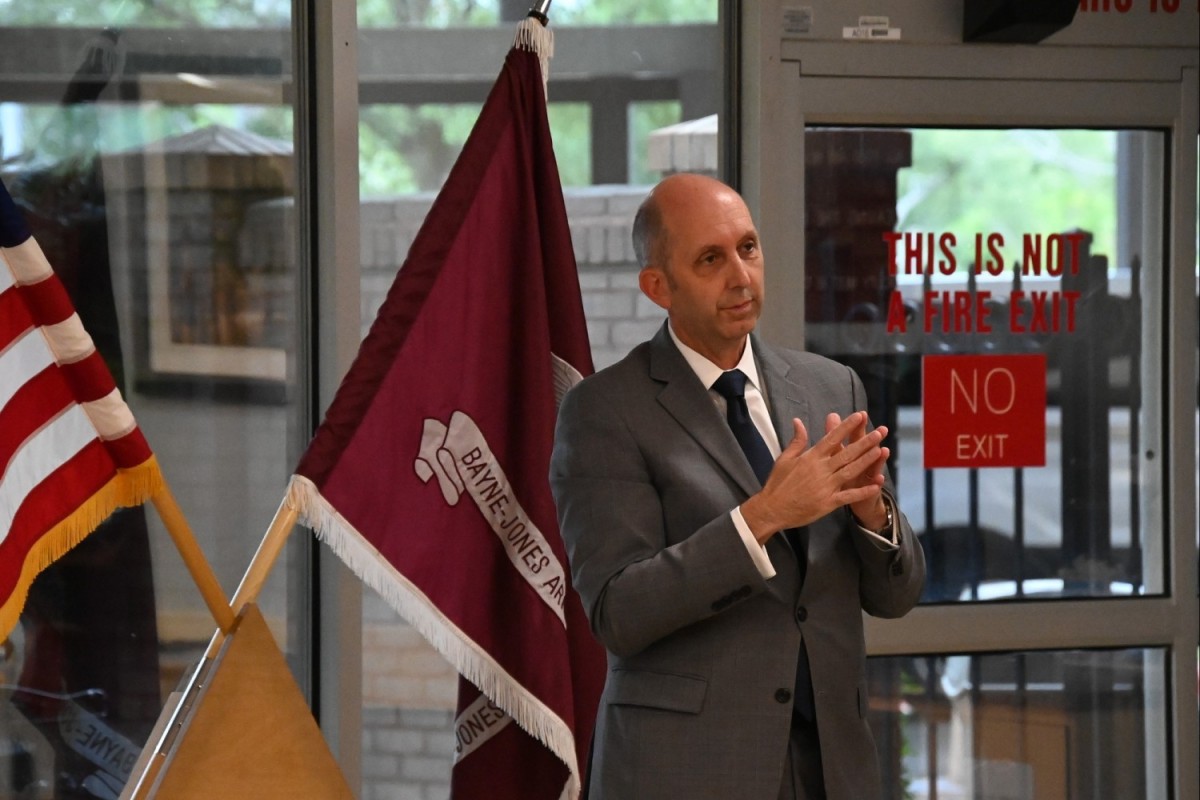
Acting Assistant Secretary of Defense for Health Affairs visits BJACH, highlights critical role in Fort Polk readiness
How did your country report this? Share your view in the comments.
Diverging Reports Breakdown
Acting Assistant Secretary of Defense for Health Affairs visits BJACH, highlights critical role in Fort Polk readiness
Acting Assistant Secretary of Defense for Health Affairs Dr. Stephen Ferrara visited Bayne-Jones Army Community Hospital at the Joint Readiness Training Center at Fort Polk, Louisiana June 24. Ferrara met with installation and medical leaders to discuss Military Health System priorities: support the warfighter, sustain our medical skill sets, and strengthen the readiness of our medical forces. “Being on the ground provides the context and depth I need to truly understand the challenges our healthcare professionals face—and to identify ways we can better support them through technology, staffing and policy,” Ferrara said. He emphasized BJACH’s importance to the JRTC mission where Soldiers are staffed, medically ready, and trained to fight as we fight. The hospital is also a vital part of the training program for soldiers rotating through the training center. It provides doctors, nurses, and other healthcare professionals the training they need to meet the realities of the battlefield, Ferrara says. He said seeing operations on site is critical to grasp the complexity of military healthcare in rural environments.
FORT POLK, La. —Dr. Stephen Ferrara, acting assistant secretary of defense for health affairs, visited Bayne‑Jones Army Community Hospital on June 24 to gain firsthand insight into the installation’s medical readiness mission and the hospital’s vital role in supporting Soldiers rotating through the Joint Readiness Training Center at Fort Polk.
Ferrara, a retired Navy physician and principal medical advisor to the secretary of defense, said that seeing operations on site is critical to grasp the complexity of military healthcare in rural environments.
“The information I receive at the Pentagon is often a filtered snapshot,” Ferrara said. “Being on the ground provides the context and depth I need to truly understand the challenges our healthcare professionals face—and to identify ways we can better support them through technology, staffing and policy decisions.”
Ferrara emphasized BJACH’s importance to the JRTC mission, where medically ready Soldiers are essential to fully staffed training rotations.
“We must train as we fight,” Ferrara said. “That includes making sure our medics, doctors and nurses are trained and equipped to meet the realities of the battlefield. Our ultimate weapon system is the warfighter, and we must optimize human performance to keep that system strong.”
Ferrara said BJACH’s role in diagnosing, treating and returning Soldiers to duty is essential to operational readiness—helping units maintain deployable strength and ensuring commanders have the medically ready force they need to train and fight.
Brig. Gen. Jason A. Curl, commanding general of the JRTC and Fort Polk, stressed the challenges rotational units face while conducting high‑risk activities in the austere conditions of the combat training center.
“Having BJACH available mitigates some of the challenges brigade‑level commanders face when Soldiers are taken from the fight due to injuries or illnesses,” Curl said. “Whether it’s extreme heat, heavy rain, or the wildlife, we rely on BJACH’s ability to operate 24/7 as a full‑service hospital. That kind of round‑the‑clock capacity is critical to ensuring Soldiers can be treated and returned to their units quickly. Without it, we’d lose readiness and risk the cohesion and capabilities of our rotational units.”
Curl emphasized that BJACH’s full‑spectrum family health services are also strategic in recruiting and retaining top talent.
“Quality family health services are essential for attracting the best and brightest to serve as observer–coach–trainers at the JRTC,” he said. “They expect comprehensive care for themselves and their families when they come here.”
During his visit, Ferrara met with hospital and installation leadership, toured the emergency department, surgical services, labor, delivery, recovery and postpartum unit, and the mixed medical‑surgical ward. He received briefings on staffing, infrastructure and readiness trends, recognized several BJACH team members, and took questions from staff during an open forum.
“BJACH is more than a hospital-its’ the heartbeat of our community and the backbone of readiness at Fort Polk,” said Col. Patrick W. Miller, commander of Bayne-Jones Army Community Hospital. “Having our capabilities on site not only ensures Soldiers are cared for and returned to duty, but it also shows commitment to their Families and the broader post community. This visit allows us to showcase our scope and ask for the support needed to sustain care for our warfighters-and those they come home to.”
Ferrara also highlighted efforts to improve collaboration across the Military Health System by aligning staffing roles among the services and standardizing clinical qualifications.
“A physical therapist at BJACH, for example, should have the same responsibilities and qualifications as one at Walter Reed or the Naval Medical Center San Diego,” he said. “That kind of consistency improves quality, simplifies staffing, and supports interoperability.”
As part of that effort, Ferrara said his office is focused on seamless data sharing through MHS GENESIS and future AI‑enabled tools to support efficiency, accuracy and reduced provider workload.
Ferrara acknowledged the staffing challenges faced by rural medical treatment facilities and laid out initiatives including recruitment and retention incentives, infrastructure investments, expanded virtual health options and regional partnerships with civilian healthcare systems.
“We’re expanding telehealth, cutting red tape, and looking for smart ways to deliver high‑quality care close to home—especially at facilities like BJACH,” he said. “That means thinking creatively about workforce solutions and partnering where it makes sense, while never compromising the care our beneficiaries deserve.”
“This visit wasn’t just a walk‑through,” Ferrara said. “It was about listening, verifying, and ensuring that our policies align with the operational realities on the ground at places like Fort Polk.”
